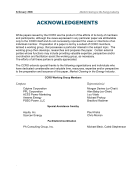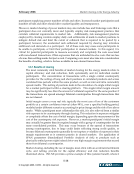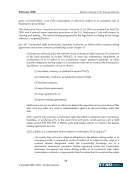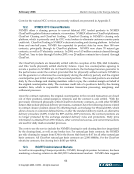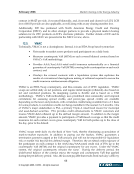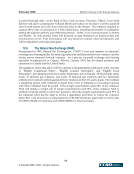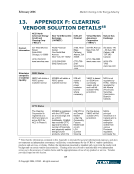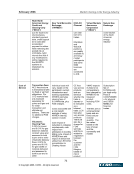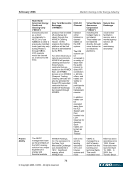February 2006 Market Clearing in the Energy Industry © Copyright 2006, CCRO. All rights reserved. 1 1. EXECUTIVE SUMMARY The purpose of this paper is to enhance the momentum of the use of financial as well as physical clearing in the energy industry by: contributing to a common understanding and definition of clearing identifying its benefits to the market identifying hurdles and challenges still present and presenting recommendations that promote its appropriate application and development. Analysis, including the review of the large body of empirical evidence, found that efficient clearing models may have a profound, positive, systemic impact on the efficiency of markets. The empirical evidence reviewed includes the energy future markets, developments with Independent System Operators (ISOs) and Regional Transmission Organizations (RTOs), and financial and energy markets, both domestically and internationally. Notwithstanding evidence that market clearing has significant positive impacts on market efficiency as a whole, there are a number of challenges and costs, both to the energy markets and to individual participants, especially with respect to physical power, that are explored herein. 1.1. Definition of Clearing Clearing is the process and procedure through which a clearing house or similar organization becomes the buyer to each seller of a contract, and, the seller to each buyer, and assumes responsibility for protecting buyers and sellers from financial loss by assuring performance on each contract. When there are many participants in a clearing process it is referred to as multilateral clearing, multilateral in the sense that a participant’s trades can be netted, as appropriate, against the participant’s multiple counterparties. All U.S. futures exchanges have successfully used multilateral clearing systems since 1925. 1.2. Clearing Models There are several clearinghouse models, but the primary models discussed in this paper are single tier (mutualized) and two-tier. In the single tiered model, the clearinghouse alone acts as the central counterparty to clearing participants and assumes responsibility for performance of all rights and obligations. The single tier model can be contrasted to the two-tier model where a clearing member, such as a Futures Commission Merchant, acts as the intermediary between the participant and the clearinghouse, and extends trade guarantees, margin and other credit extensions to participants. The clearing member then brings transactions to be cleared to the clearinghouse and these transactions are cleared and settled on its books. The clearing member posts collateral to the clearinghouse to cover risk on the transactions and the clearinghouse monitors the credit standing of the clearing member. Importantly, the clearinghouse extends its trade guarantee to the clearing member, not the participant, i.e., the clearing member’s customer. The customer has no direct credit relationship with the clearinghouse. Clearing services are well established in many commodity markets around the world, including major future exchanges, such as metals and energy futures on the New York Mercantile Exchange (NYMEX) and agricultural futures on the Chicago Board of Trade
Purchased by unknown, nofirst nolast From: CCRO Library (library.ccro.org)


